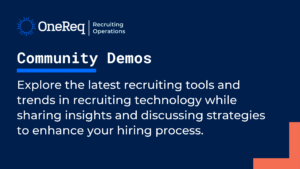BY: Wahab Owolabi
Previously, I discussed the systemic issues present in university recruiting. I addressed the lack of appropriate resourcing as compared to the diversity goals UR teams are tasked with, the lack of long term investment in HBCUs, and the lack of diversity on recruiting teams.
Let’s talk recruiting. It’s not hard to find Black and LatinX software engineering talent. It’s getting them through the application process successfully that presents the challenge. We need to change a system that claims to want diversity but still struggles to discover and evaluate candidates who may speak a different “language” than that of your traditional Silicon Valley engineer.
Second-Order Thinking: Creating Solutions for the Root not the Symptom
Companies need to come to the realization that they’re evaluating future potential much in the same way a University evaluates a high school senior. University recruiting needs to mirror a bit more closely the process that college admissions goes through. It is a system that forces colleges to be transparent with prospective students. You might hear about top ranked universities not enrolling a great representation of minority students but you don’t hear about those schools failing to discover or attract qualified applicants of color.
There is a clear pathway. If you are a high school student, you know that if you crush your grades, among other factors, you will have a great shot at getting into one of your top school choices. You also know that if you don’t, you aren’t getting into Harvard.
So why are we struggling to discover and attract great minority candidates to what we can agree is one of the most desirable industries of the last two decades? If you combine transparency about what it takes to successfully prepare, apply, and interview for jobs in tech with a proactive approach to share this knowledge with those outside the current ecosystem then we can start to move the needle. This creates another layer of vetting. Students who want to break through will do what it takes to prepare and put themselves in position for success.
Getting Real About Investing in a New System
A lot of companies woke up last year and said “we need to hire more Black people” and then expected that by some miracle it would happen overnight without making any systemic changes to make it happen. You have to invest in making this happen. For example, we all want to hire at HBCUs now but we continue to push recruited candidates through a process designed to evaluate and hire students from Stanford and MIT.
Changing systems is hard. It takes resources. It takes time. It also takes vision, belief, and perseverance to see it through.
I’d love to see us get to a place where we have an equitable system regardless of where someone went to school. Let’s start with changing to a system that fairly evaluates talent from all backgrounds especially those different than we are accustomed to in tech.
We all want to hire at HBCUs now but we continue to push recruited candidates through a process designed to evaluate and hire students from Stanford and MIT.
Investing in Developing Technical Talent. FAANG Can’t Do It Alone
We can’t leave it up to the largest tech companies alone to develop entry level technical talent. They all have made some strong investments, but not enough to cover the entire industry. Smaller players need to make thoughtful investments as well. While it does not make sense for a Series A or even a pre-IPO startup to have an early ID program for CS sophomores, it does make sense for tech startups and their venture capital backers to collectively invest in programs and experiences that allow for the identification and development of technical talent they will be recruiting in 2-3 years. It’s clear to me that companies must come together to collectively increase the talent pool.
Two of our programs, InternHacks and the URx Talent Development Program (TDP), do exactly that — bringing companies together to collectively engage and develop underrepresented early career tech talent. What could we do if more companies were open to collaboration in recruiting?
Bring Companies Together to Collectively Identify and Develop Technical Talent
InternHacks combines the best parts of a tech internship and a hackathon, providing participants the best of both worlds in building something from nothing, while also getting exposure to professionals from some of the most consequential tech companies in Silicon Valley. The URx Talent Development Program (TDP) is an event series featuring companies within the URx Community that prepares students for the upcoming recruiting cycle while exposing them to new tech companies.
Looking Forward
Another systemic issue I have been monitoring closely from a diversity recruiting standpoint is the issue of discovery. I see companies put a lot of resources into discovering talent and candidates (especially those from underrepresented tech backgrounds ) but still maintain a hard time discovering opportunities at the right moments.
We can’t expect students who have no idea how to break into tech to know which startups to track or the latest sourcing platform to apply through. We value efficiency in tech, yet our recruiting processes as an industry at the entry level are incredibly inefficient.
In an industry where we know exactly when talent is coming to the market we should be able to design a more efficient process. We began exploring ways to solve this over the Summer and Fall of 2020 through the pilot of TalentBoard.io. We’ve continued to make investments here and will be sharing more in the coming weeks and months on our progress.
I believe that companies will soon realize that at the entry level it does not need to be a zero sum game. The reality is the average tenure of a tech employee is less than 24 months. Think about that. In the first 7 years of a tech worker’s career, they are likely to work for at least three different companies. At the entry level, we are recruiting for the industry! With an efficient system of early career tech recruiting, we can enable companies to compete for talent while also working together to grow the talent pool. Our collective success attracting and developing more underrepresented tech talent leads to a bigger pool to recruit from. Everyone wins.
A Final Thought on Community
Community has become a popular buzzword during the pandemic. I’m incredibly proud of the 2,400 strong community of UR professionals we’ve built with URx and the fact that we invested and believed in community before it was cool to do so. To support that community we are investing more in what I like to call the URx Ecosystem.
The URx Ecosystem encompasses everything we do to support our community through our events & conferences, programs, slack workspace, community partners and more! We strive to ensure we have a community that can continue to learn from each other. As the UR industry evolves, URx will make sure our community has a finger on the pulse of all the areas in the organization that impact their ability to recruit.
URx Will Always be Driven by Community.
This is part 2 of a two part post. You can read part 1 here.




